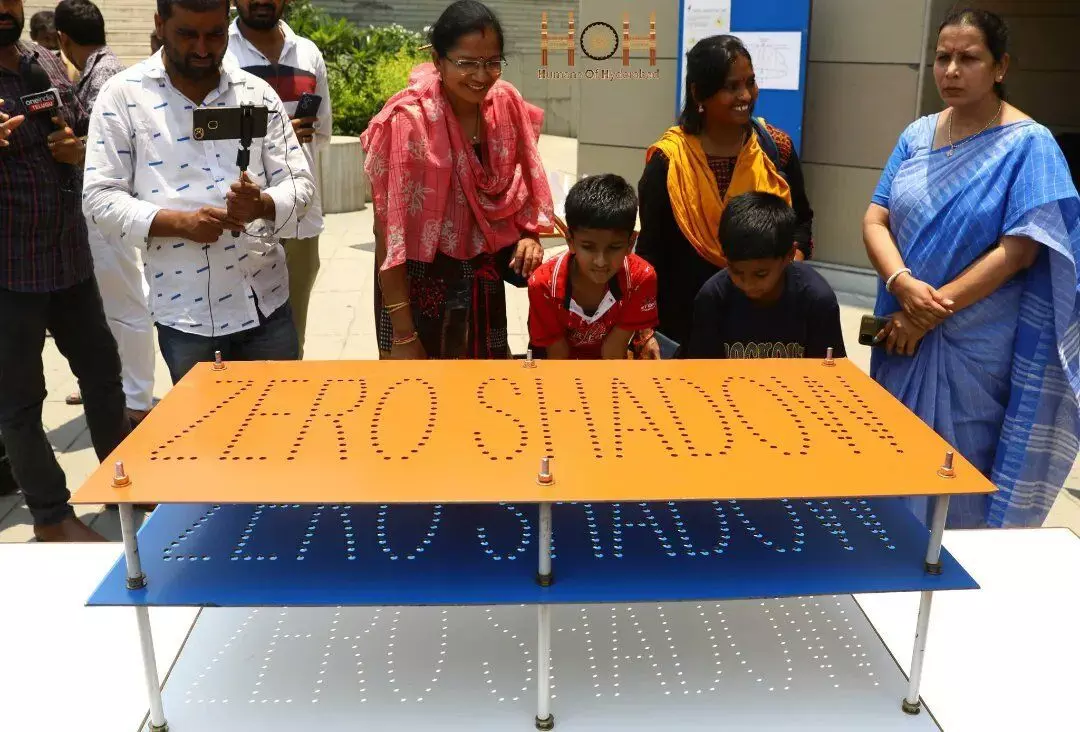Zero Shadow Day: Here are the places that will witness the celestial event next
The same event will be witnessed in Visakhapatnam on 10 May, in Warangal on 11 May, in Vizainagaram on 12 May, and in Srikakulam on 10 May
By Sri Lakshmi Muttevi
Hyderabad: An interesting celestial event called ‘Zero Shadow’ was witnessed at 12.12 p.m. by the people of Hyderabad on Tuesday. The event occurs twice every year, and the next one is on 3 August.
The same event will be witnessed in Visakhapatnam on 10 May, in Warangal on 11 May, in Vizainagaram on 12 May, and in Srikakulam on 10 May.
With the aim to create awareness about this astronomical phenomenon and the role of the tropics, this day is celebrated as “Zero Shadow Day,” where zero shadow occurs when the Sun is exactly overhead for a location.
The Planetary Society of India in association with the Press Club Hyderabad organised live observation/demonstration using vertical objects. At the time of Zero Shadow, only the shadow of vertical objects disappears when the Sun is exactly above in that location, whereas shadows of other objects are still visible.
For example, a person standing with their entire body straight doesn’t create a shadow. Whereas the same person if he stretches his hand while standing, a shadow of his hand is still visible.
When is the next Zero Shadow?
In places like Guntur, Ongole, Tirupati, Anantapur, and Kadapa, Zero Shadow Day was a few days ago. They will have to wait till the last week of July or August to witness it again.
Timings
Here are the date and timings of Zero Shadow as they will occur in the coming days in the Telugu states:
Reason for Zero Shadow Day
According to the director of Planetary Society N. Raghunandan Kumar, Zero Shadow occurs when the Sun reaches the highest point in the sky above the Tropic of Cancer or Tropic of Capricorn every year, importantly the rotation of the earth with 23.5 degree axial tilt.
“The Earth’s elliptic path of revolution around the Sun resulting in the northward movement of the Sun (Uttarayana) or southward movement of the Sun (Dakshinayana) are the factors leading to the occurrence of Zero Shadow Day in a location near the tropical latitudes,” he explained.
How to observe zero shadow
First, select a vertical object. From 11.30 a.m. to 12.30 p.m., start observing the shadow of the vertical object.
As time passes, you will notice the decrease in the shadow of the vertical object every three minutes. And at the exact time of solar noon, when the Sun is exactly overhead, you will notice that the shadow has disappeared for a brief moment.
“As students are at home for vacation, we request parents to encourage students to be part of this observation in and around their homes. They can send photos, videos, and selfies to 7993482012,” the director said.